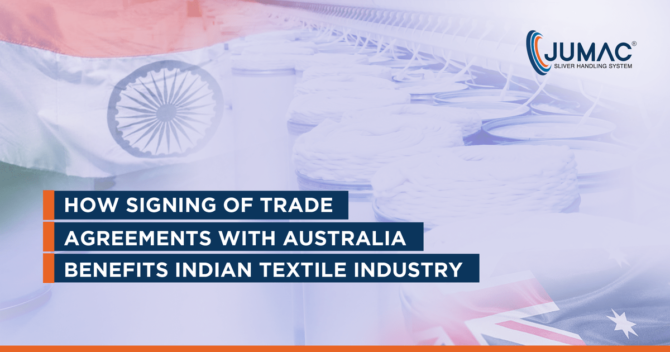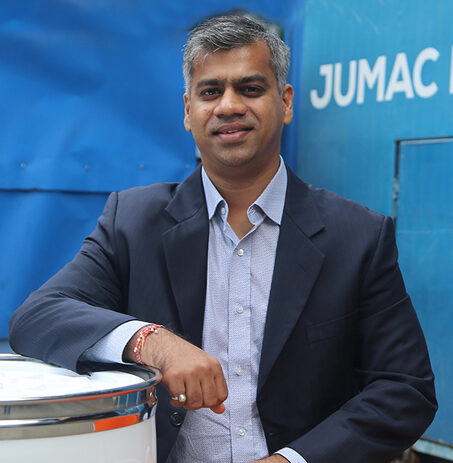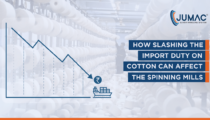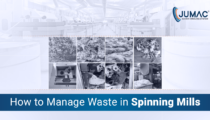The winds of change are well and truly blowing, as…

How Signing of Trade Agreements with Australia Benefits Indian Textile Industry
Early last month, the much talked-about Economic Cooperation & Trade Agreement (ECTA) between India and Australia was signed. The agreement – the first of its kind signed by India with a developed country in more than ten years – is expected to boost the total trading volume between the two countries to almost $50 billion by the next five years or so (a 2X increase compared to present trade volume). The Indian business economy in general, and the textile & handloom sector in particular, are all set to benefit in a big way from this agreement. From yarn manufacturers and spinning mill-owners, to suppliers of HDPE spinning cans – these benefits are expected to percolate to all levels of the Indian textile industry. We will elaborate more on this in what follows:
Removal Of Major Export Obstacles
For home textiles manufactured in India, the Australian markets present excellent opportunities. The demand for finished products like curtains, quilts, bed & bath linen, floorings, carpets & other related things is steadily growing in Australia. Thanks to the ECTA, Indian textile exports to Australia would go up in a big way.
A huge chunk of apparel products (~90%) and nearly 70% textiles in general have a 5% duty levied on them. This import duty places exports from India at a major disadvantage (particularly compared to nations that have FTA with Australia). The ECTA is expected to eliminate this obstacle, and foster trading activities. More exports would lead to higher revenues and better ROI figures.
Greater Demand To Fuel Employment Opportunities
As textile exports from India to Australia are encouraged, more and more manufacturing units are expected to come into existence. The Indian textile sector already offers direct employment to almost 50 million individuals – and this figure should increase manifold as a result of the ECTA. Relatively rural localities, along with Tier 2 & 3 cities, will see a massive jump in the number of manufacturing units.
The growth in the employment potential of the Indian textile sector is expected to be fueled by rising investment figures and higher capacity creation & utilisation. The India-Australia trade agreement should pull up annual employment opportunities in this sector by ~40000 people. With the establishment of more production facilities and the exponential growth in workforce, the textile industry ecosystem in India will grow stronger than ever.
Sustainability & Best Practices In The Spotlight
With the Ind-Aus ECTA being penned down, the rapid growth of the Indian textile industry has come sharply into focus. According to experts, the cumulative volume of textile exports is expected to go beyond the $100 billion mark by the end of 2030. The trade agreement should ideally pave the way towards meeting this target and establishing India as a global textile powerhouse.
In addition to scaling up, spinning mills, yarn manufacturers and HDPE sliver can suppliers will put a stronger emphasis on maintaining sustainability, and following industry best practices – in order to meet & surpass the requirements of domestic/international buyers. In this context, it is also important to note that the Australian market can serve as a handy reference point for Indian manufacturers – in terms of understanding and implementing technological advancements to take the industry ahead.
The Textile Sector Is Set To Become More Financially Rewarding
The ECTA between India and Australia will bolster production, exports and international sales. This growth is expected to be continually driven by the preferential access to the Australian markets. The onus will be on textile manufacturers to deliver quality-optimised and customised products at scale, so that the enhanced export opportunities can be optimally leveraged.
According to reasonable estimates, the total revenue from textile exports from India can go up by 3X – thanks to the favourable tariff clauses in the ECTA. The total monetary value of exports of textile products to Australia, in particular, will go up significantly as well. The demand for luxury textile products and handloom products is all set to surge over the next few quarters. The growth opportunities will be manifold.
Increase In Production Efficiency; Greater Focus On Quality
For all labour-intensive industries in general, and for the textile & apparel sector in particular – the new trade agreement has come as a serious boon. Leading players from the yarn manufacturing, machinery operators and designers of HDPE spinning cans have expressed their belief that the ECTA will help the textile sector to evolve – with production, efficiency and quality levels all receiving a much-needed thrust.
Apart from opening up opportunities for Indian textile companies to get acquainted with the latest, cutting-edge technology, the India-Australia ECTA should enable domestic players to source high-quality raw materials, minerals and intermediate goods at highly competitive prices. As manufacturing standards go up, the acceptability of Indian textile products in the global markets will also increase considerably.
Growth In Bilateral Trade & The Way Forward
India occupies the 9th spot in the list of Australia’s international trading partners. On the other hand, Australia is India’s 17th most important trading partner. With the latest Indo-Aus trade agreement coming into effect, the volume of bilateral trade between the two nations will go up on a massive scale (in 2021, the value of this bilateral trade stood at a little under $28 billion).
The Economic Cooperation & Trade Agreement between India and Australia has also brought in waves of optimism for the textile sector. Going forward, other major international markets for textile products – like Canada, UK & other European countries, and select Gulf Cooperation Council (GCC) nations – may also open up textile exports from India at zero import duty (following the examples set by Australia and the UAE). If that happens, recognition for the excellence that the Indian textile industry stands for will skyrocket.
Note: The zero customs duty benefit for access to Australia covers around 96.4% of the export value from India.
Moving To A Position Of Global Dominance
Right from the 17th century, India’s mastery over cotton textiles has been acknowledged & appreciated around the globe. With the new trade agreement now in place, domestic textiles & apparels would once again become synonymous with state-of-the-art innovation, supreme quality and enhanced reliability.
The honourable Indian PM Narendra Modi has already outlined the 5F vision (farm to fiber to factory to fashion to foreign) – designed to make India a global leader in cotton manufacturing & exports. The AI ECTA is likely to be a major driver of the growth of this sector – and should, eventually, help in better collaboration for attaining this target.
According to Union Minister Piyush Goyal, the ECTA trade agreement between India and Australia will unveil “infinite opportunities for the textiles, handloom, and footwear sectors”. Having preferential market access in Australia should give the necessary thrust to the domestic textile & apparel sector and take the overall export volume to well over $1100 million by the end of 2025 (from the current level of just a shade under $400 million). This increase will, in turn, lead to exponential growth in demand – both for high-quality yarns, spinning machinery, and HDPE sliver can manufacturers. The Australia-India trade and economic agreement is all set to open up a myriad of opportunities in terms of employment, investment, production and exports in the textile sector. Our country is already a major player in the global textile industry, and ECTA will go a long way in consolidating that position further.

Passionate about transforming the industrial sector of textile and spinning industry with innovative solutions. Director at Jumac Manufacturing, leading spinning cans and accessories manufacturer and exporter from Kolkata, India.









